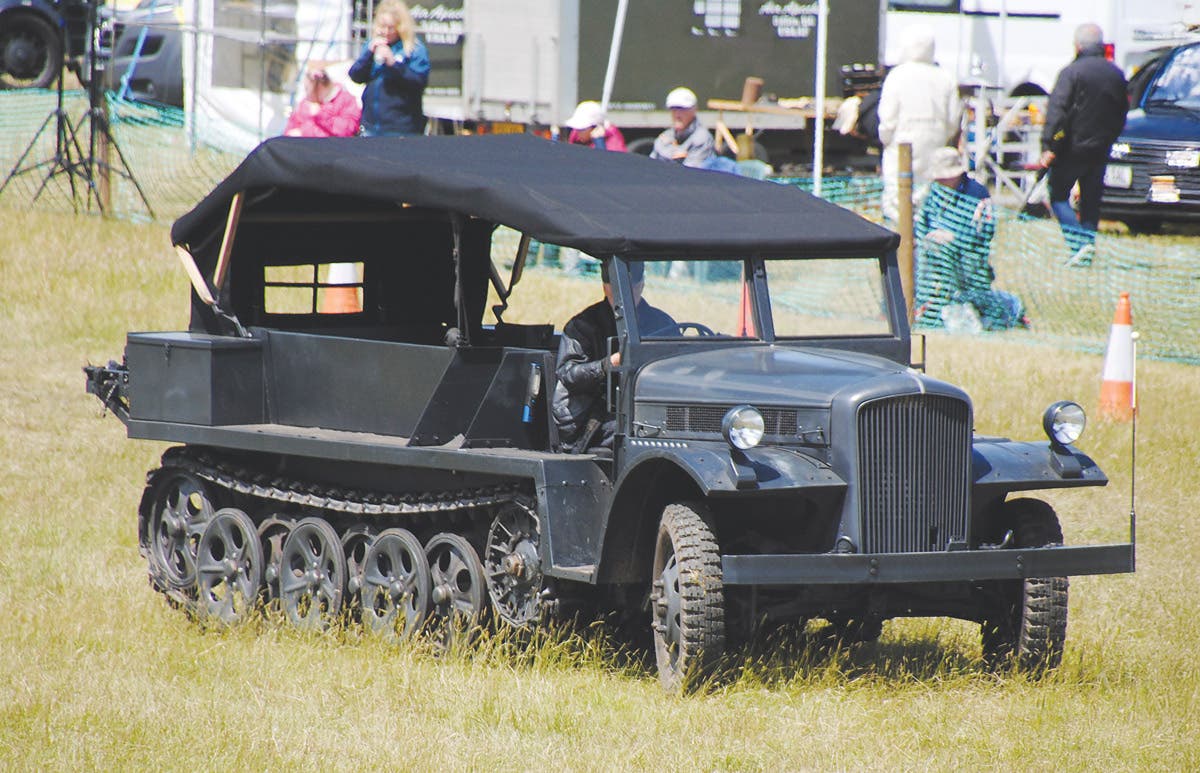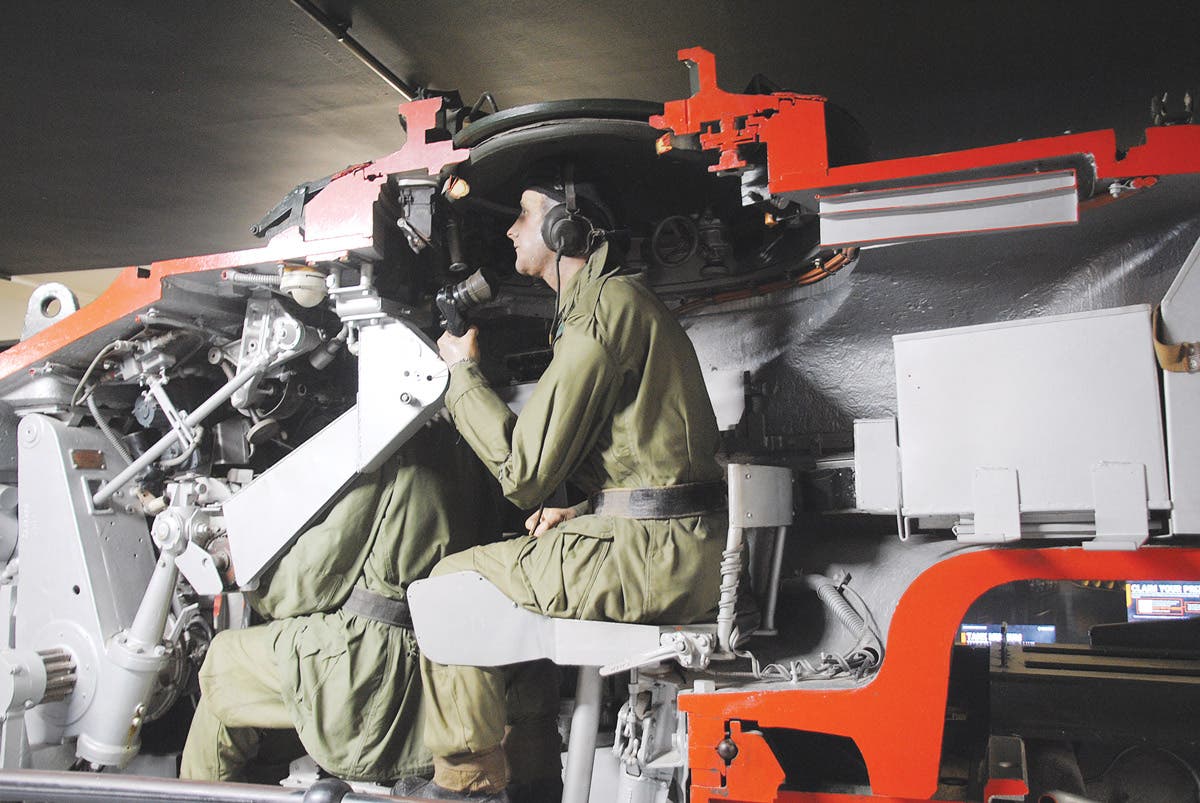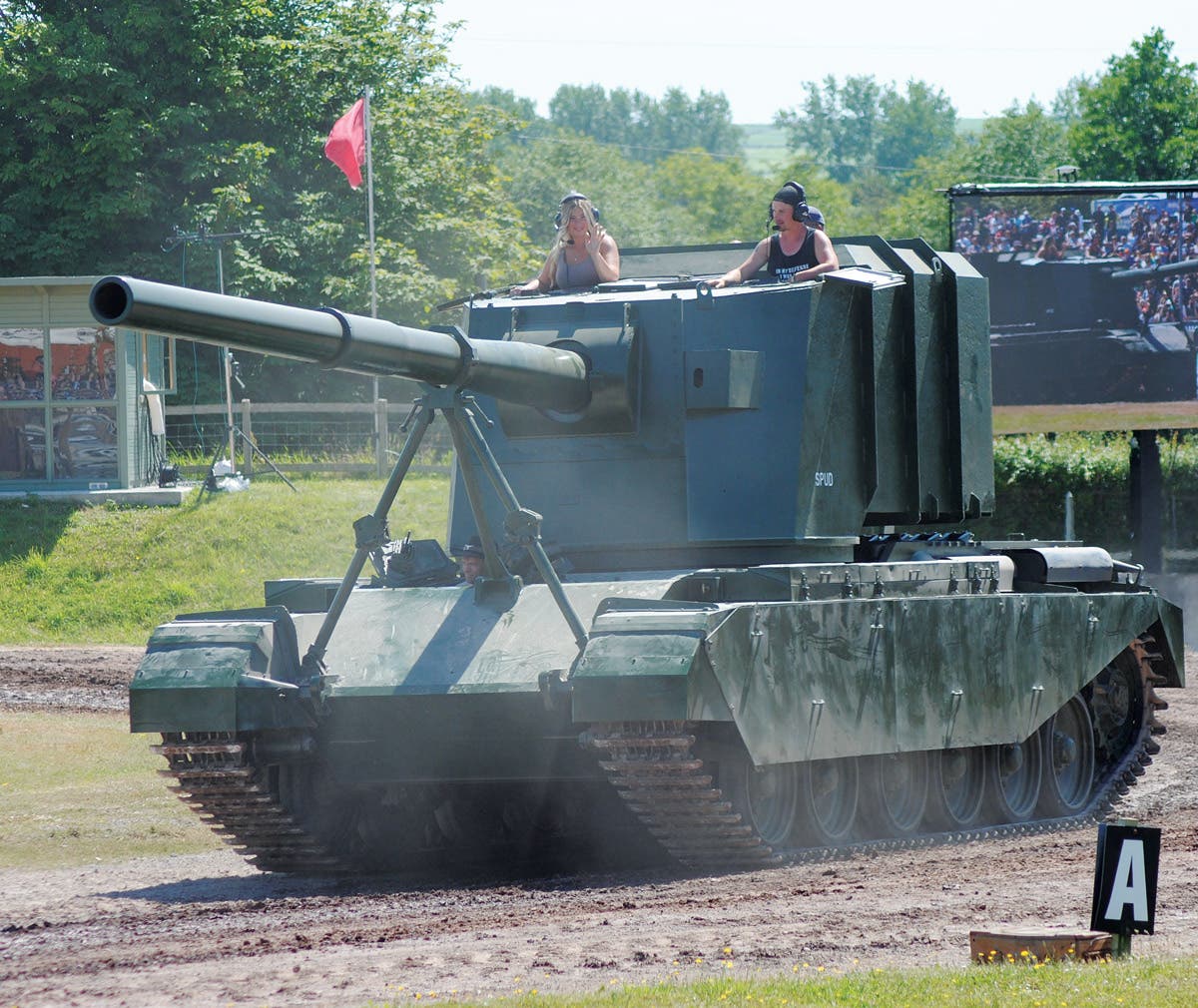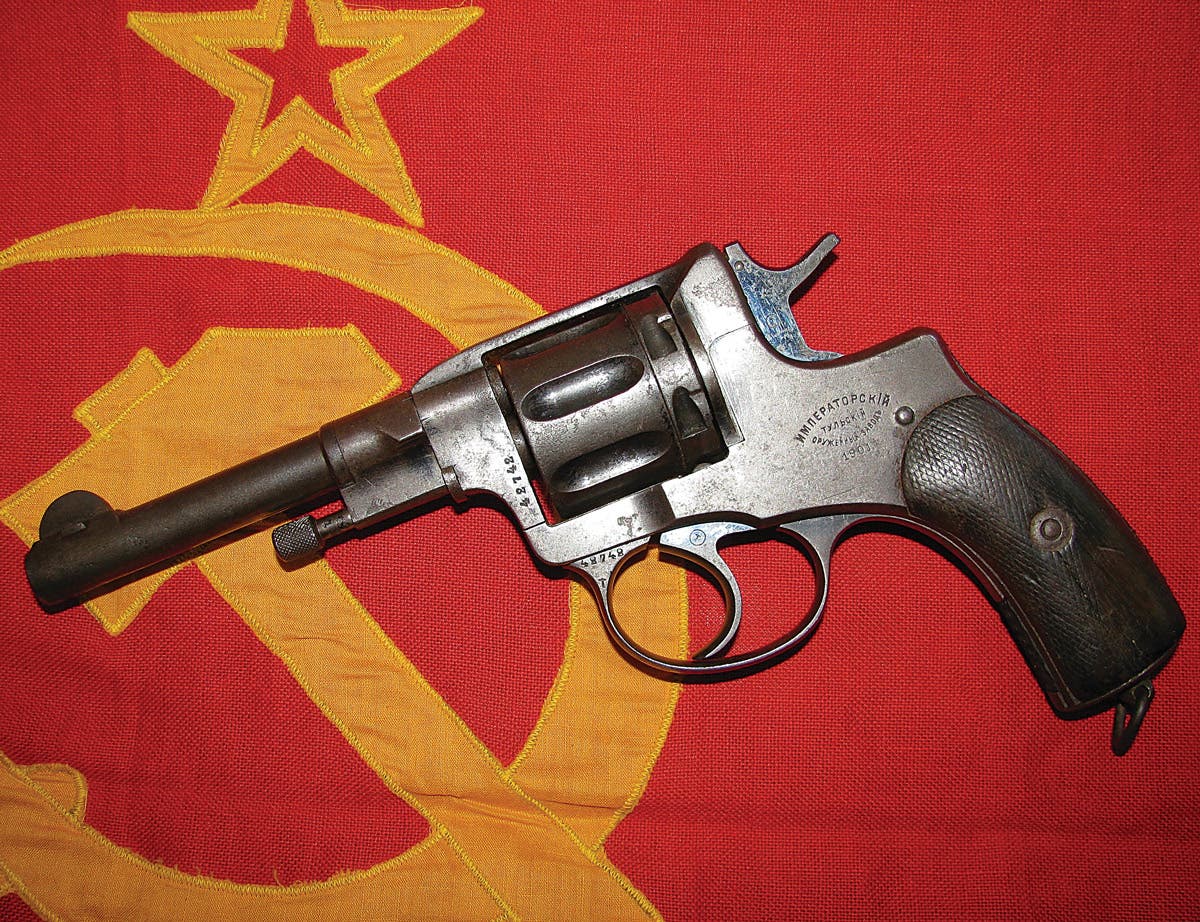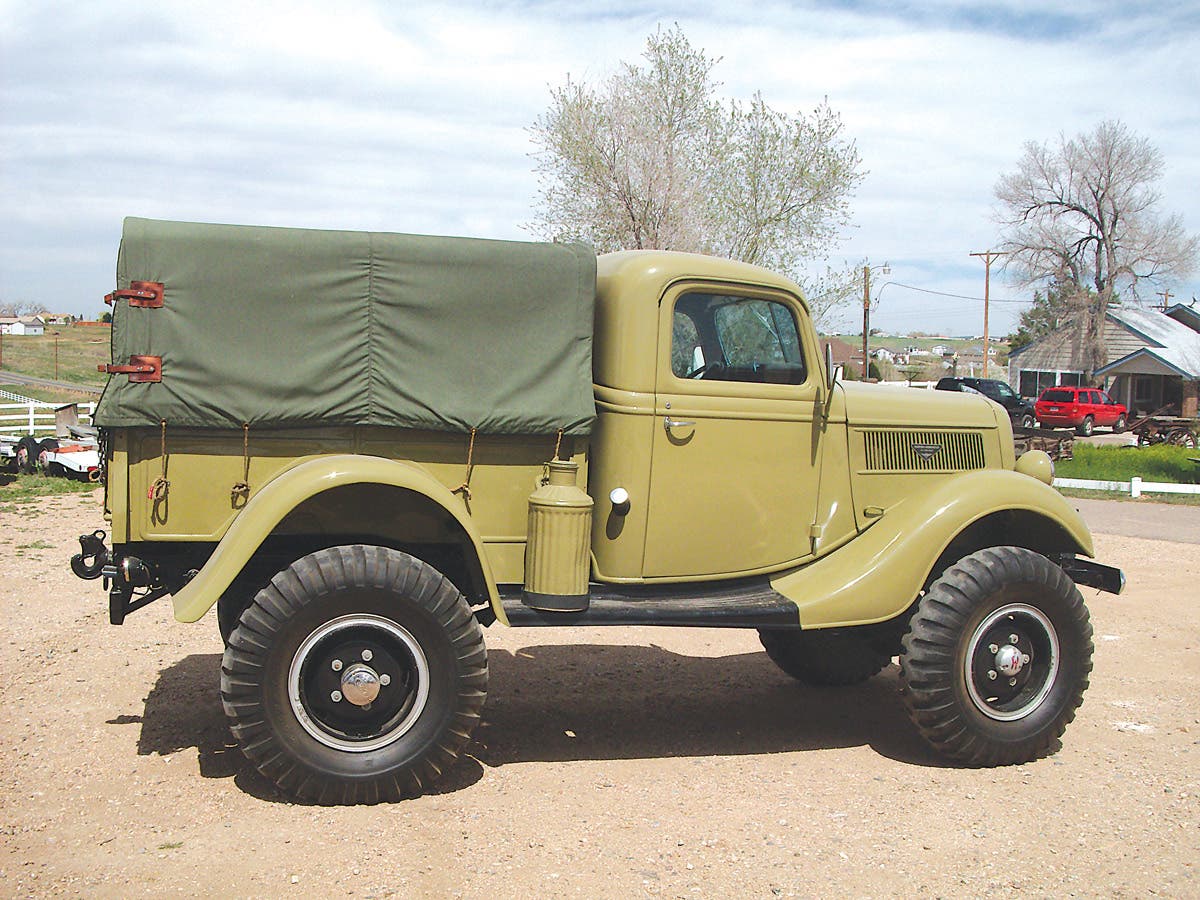“Ray Guns” Mounted on MVs
Military officials at the Quantico Marine Corps base in Virginia have demonstrated a weapon that packs a lot of heat, but does not kill or maim people.
(first published in 2008)
QUANTICO, Va. (AP) - Military officials at the Quantico Marine Corps base in Virginia have demonstrated a weapon that packs a lot of heat, but does not kill or maim people. The Active Denial System (ADS) is an oversized ray gun that uses energy beams. It would be used to disperse unruly crowds without using bullets.
Military officials say the ray gun could be deployed to Iraq early next year. But U.S. commanders want it sooner. What the troops may see as needless delays, Pentagon officials view as necessary steps toward fielding a weapon that's never been used before in combat.
While delivery schedules might be murky, there's no denying the system's punch. Reporters and military personnel who volunteered to be hit by the invisible beam found themselves feeling intense heat akin to a suddenly opened furnace. Apart from causing that terrifying sensation, the technology is supposed to be harmless -- a non-lethal way to get enemies to drop their weapons. It's not intended to kill. It emits an invisible beam of high-energy radio frequency that causes a person to recoil and flee. The weapon has been 12 years in the making, and now it's ready.
ADS is a non-lethal, directed-energy weapon system under development by the U.S. military. It is a strong millimeter-wave transmitter used for crowd control Informally, the weapon is called "pain ray." Raytheon is currently marketing a reduced range version of this technology.
Military officials say it could save the lives of innocent civilians and service members in places like Iraq and Afghanistan. The weapon is not expected to go into production until at least 2010, but all branches of the military have expressed interest in it, officials said.
During the first media demonstration of the weapon Wednesday, airmen fired beams from a large dish antenna mounted atop a Humvee at people pretending to be rioters and acting out other scenarios that U.S. troops might encounter in war zones.
HOW IT WORKS
The device's two-man crew located their targets through powerful lenses and fired beams from more than 500 yards away. That is nearly 17 times the range of existing non-lethal weapons, such as rubber bullets. Anyone hit by the beam immediately jumped out of its path because of the sudden blast of heat throughout the body. While the 130-degree heat did not cause lasting pain, it was intense enough to make the participants think their clothes were about to ignite.
The ADS works by directing electromagnetic radiation at a frequency of 95 GHz toward the subjects. The waves excite water molecules in the epidermis to around 55 °C (130 degrees Fahrenheit), causing an intensely painful burning sensation. While not actually burning the skin, the burning sensation is similar to that of a light bulb being pressed against the skin. The focused beam can be directed at targets at a range of just under half a kilometer, or 500 yards. The device can penetrate thick clothing, although not walls. There is no indication on the feasibility of electromagnetically shielding a person from its effects with a wire mesh or Faraday cage, in a similar manner that a microwave oven prevents radiation escaping. As the beam excites the water molecules in the skin, water bearing materials such as wet clothing/towels, wet pastes/gels, vegetables or meat could effectively absorb the energy, although the military claims that wearing wet clothing actually intensifies the effect.
At 95 GHz, the frequency is much higher than the 2.45 GHz of a microwave oven. This frequency was chosen because due to the stronger absorption of water at those frequencies, they penetrate the skin to a depth of less than 1/64 of an inch (0.4 mm)," which is where the nerve endings are located. A spokesman for the Air Force Research Laboratory described his experience as a test subject for the system: "For the first millisecond, it just felt like the skin was warming up. Then it got warmer and warmer and you felt like it was on fire. As soon as you're away from that beam your skin returns to normal and there is no pain."
"This is one of the key technologies for the future," said Marine Col. Kirk Hymes, director of the non-lethal weapons program at Quantico, Va., which helped develop the new weapon. "Non-lethal weapons are important for the escalation of force, especially in the environments our forces are operating in."
The system uses millimeter waves, which can penetrate only 1/64th of an inch of skin, just enough to cause discomfort. By comparison, microwaves used in the common kitchen appliance penetrate several inches of skin. The millimeter waves cannot go through walls or glass, but they can penetrate most clothing, officials said.
DEPLOYMENT
The ADS is currently only a vehicle mounted weapon, however, U.S. Marines and police are both working on portable versions. The weapon could be mounted aboard ships, airplanes and helicopters, and routinely used for security or anti-terrorism operations. "There should be no collateral damage to this," said Senior Airman Adam Navin, 22, of Green Bay, Wis., who has served several tours in Iraq. Navin and two other airmen were role players in Wednesday's demonstration. They and 10 reporters who volunteered were shot with the beams. The beams easily penetrated various layers of winter clothing.
Airman Blaine Pernell, 22, of suburban New Orleans, said he could have used the system during his four tours in Iraq, where he manned watchtowers around a base near Kirkuk. He said Iraqis constantly pulled up and faked car problems so they could scout out U.S. forces. "All we could do is watch them," he said. But if they had the ray gun, troops "could have dispersed them."
Controversy Surrounding Testing
The effects of this radio frequency on humans have been studied by the military for years, and much, but not all, of the research has been published openly in peer reviewed journals. A listing of many of these articles can be found on the military Joint Non-Lethal Weapons Program website on the ADS page.
Controversy as to the methodology of testing, in which volunteers were asked to remove glasses, contact lenses and metallic objects that could cause hot spots, has raised concerns as to whether the device would remain true to its purpose of non-lethal temporary incapacitation if used in the field where safety precautions would not be taken. Proponents of the system claim that these tests were early in the program and part of a thorough and methodical process to demonstrate the safety and effectiveness of the technology, which has now involved more than 600 volunteer subjects and some 10,200 exposures. As safety was demonstrated in each step of the process, restrictions were removed and now, according to ADS proponents, there are no restrictions or precautions necessary for volunteers experiencing the effect.[9]
Critics cite that although the stated intent of the ADS is to be a non-lethal device designed to temporarily incapacitate, easy modifications or incorrect use by the operator could turn the ADS into a torture device that would violate international conventions on warfare.
Silent Guardian
The defense contractor, Raytheon, has developed a smaller version of the ADS, named the Silent Guardian. This stripped down model is primarily marketed for use by law enforcement agencies, the military and other security providers. The system is operated and aimed with a joystick and aiming screen. The device can be used for targets up to 550 m away.
A soldier who volunteered to experience its effects described it as "a bit like touching a red-hot wire, but there is no heat, only the sensation of heat". Contrary to Raytheon's claims that the pain ceases instantly upon removal of the ray, the volunteer said that the finger he subjected "was tingling hours later."
From the staff of North America's no. 1 historic military vehicle source -- Military Vehicles Magazine




